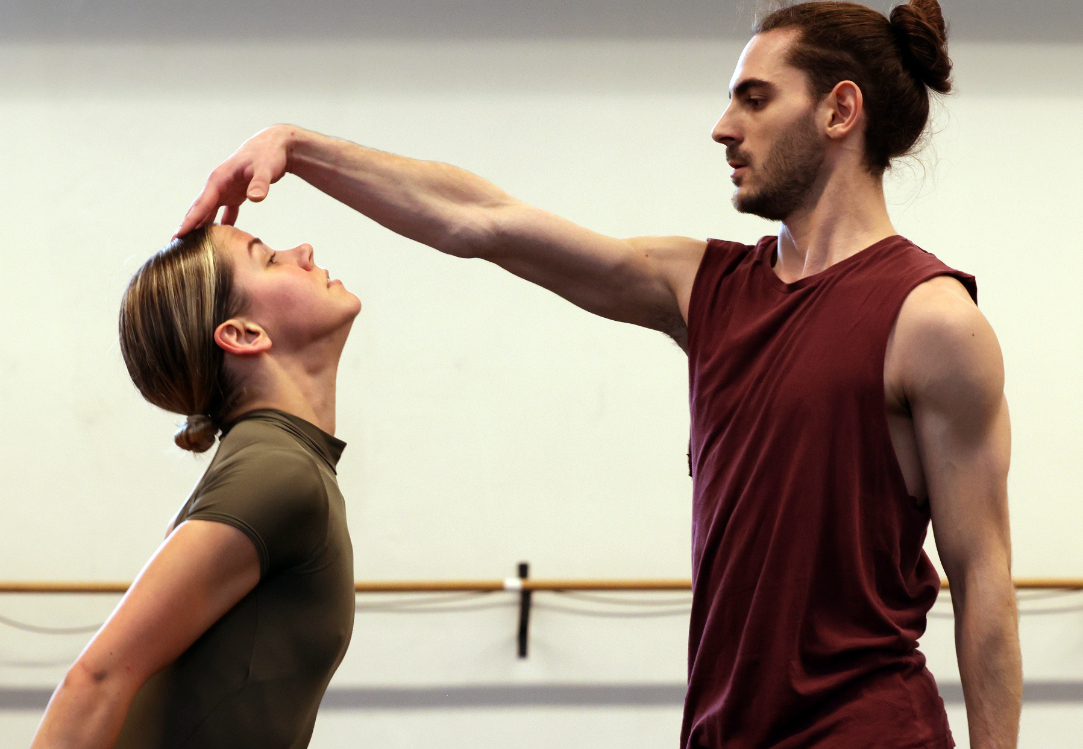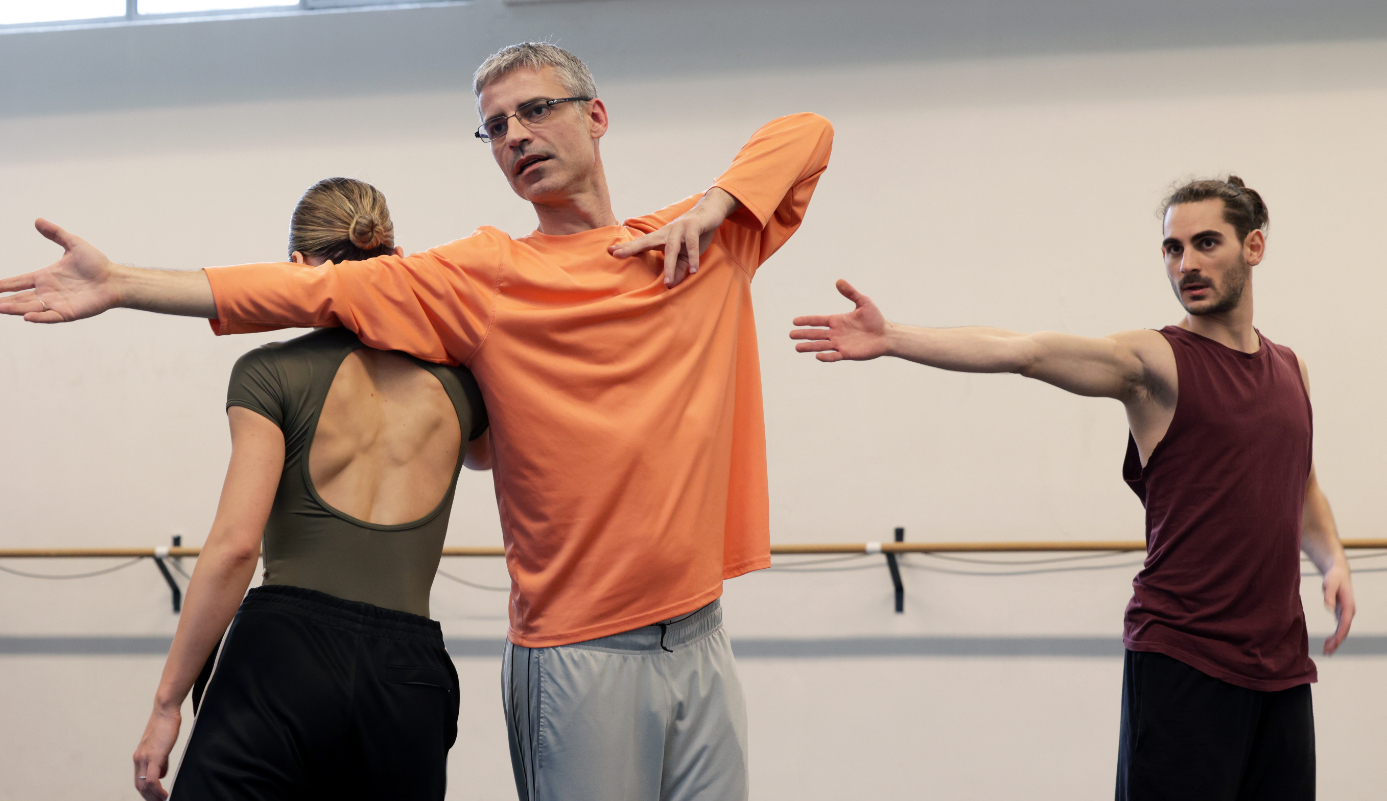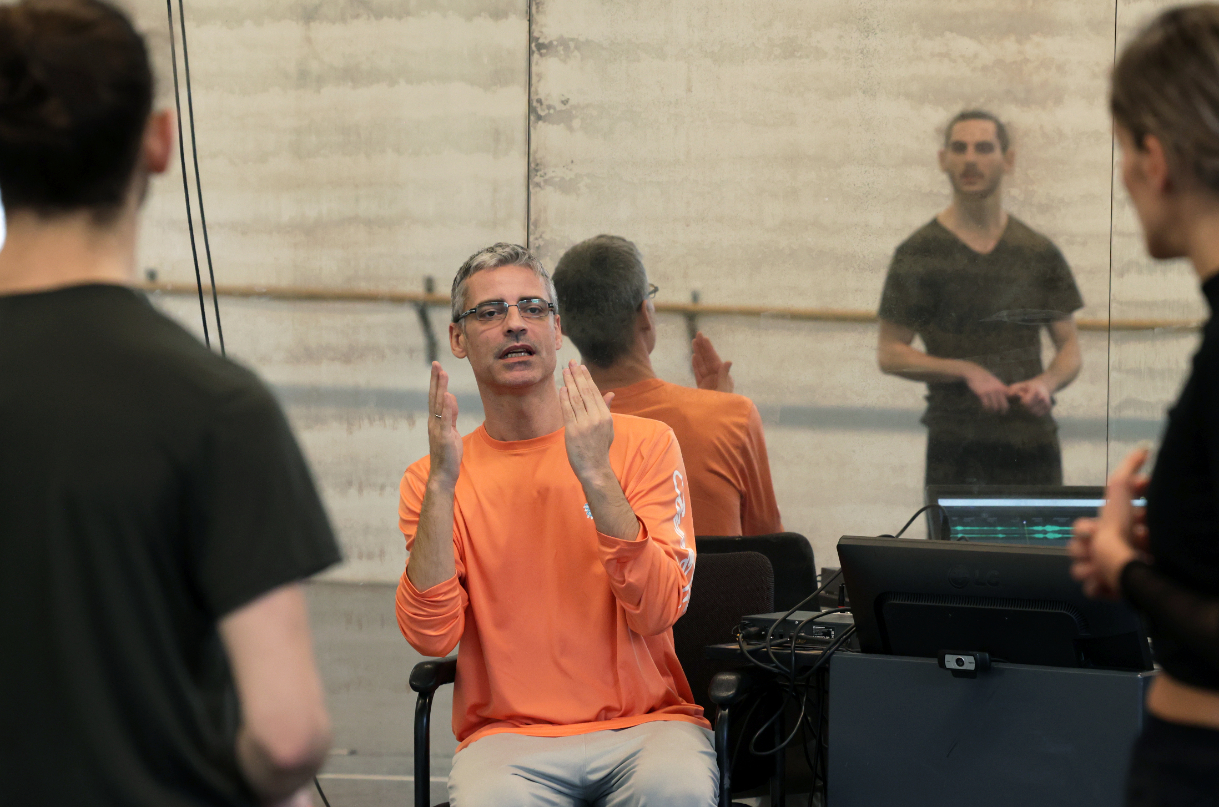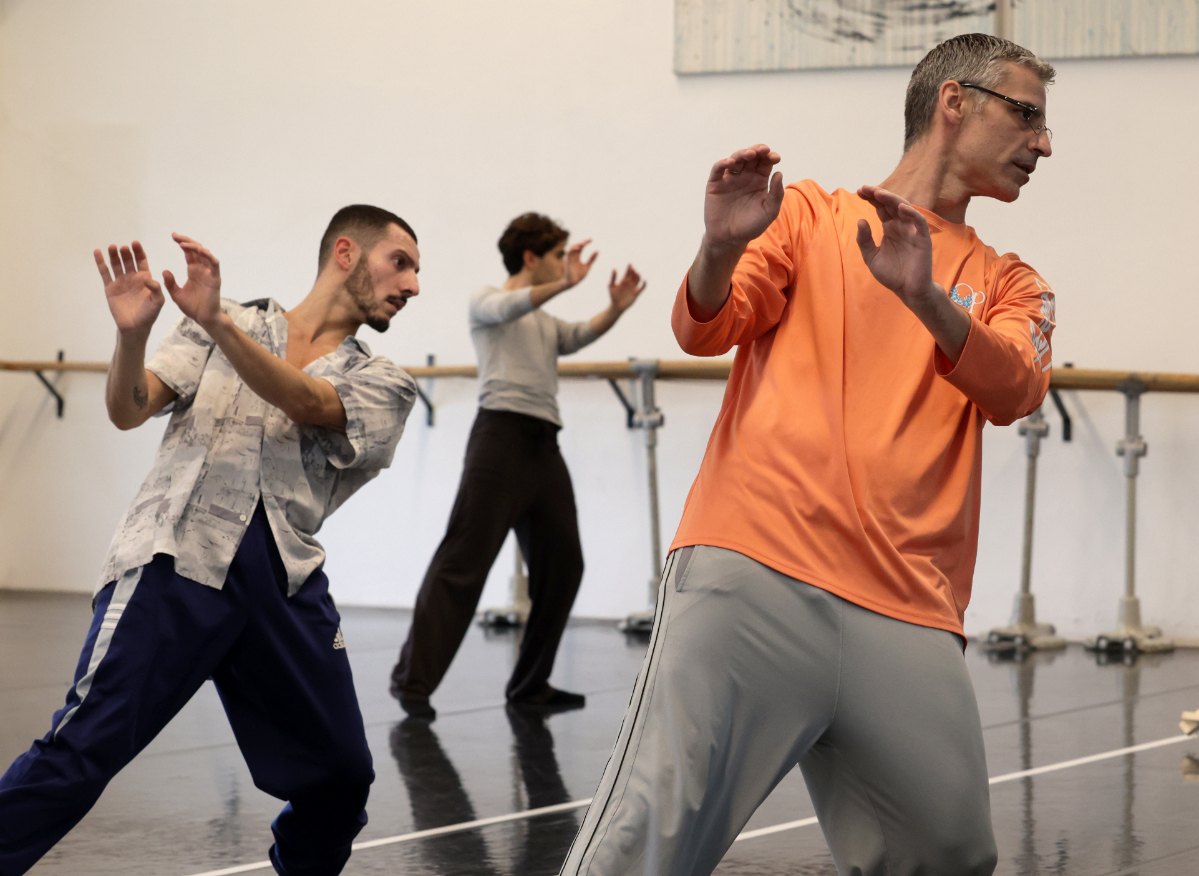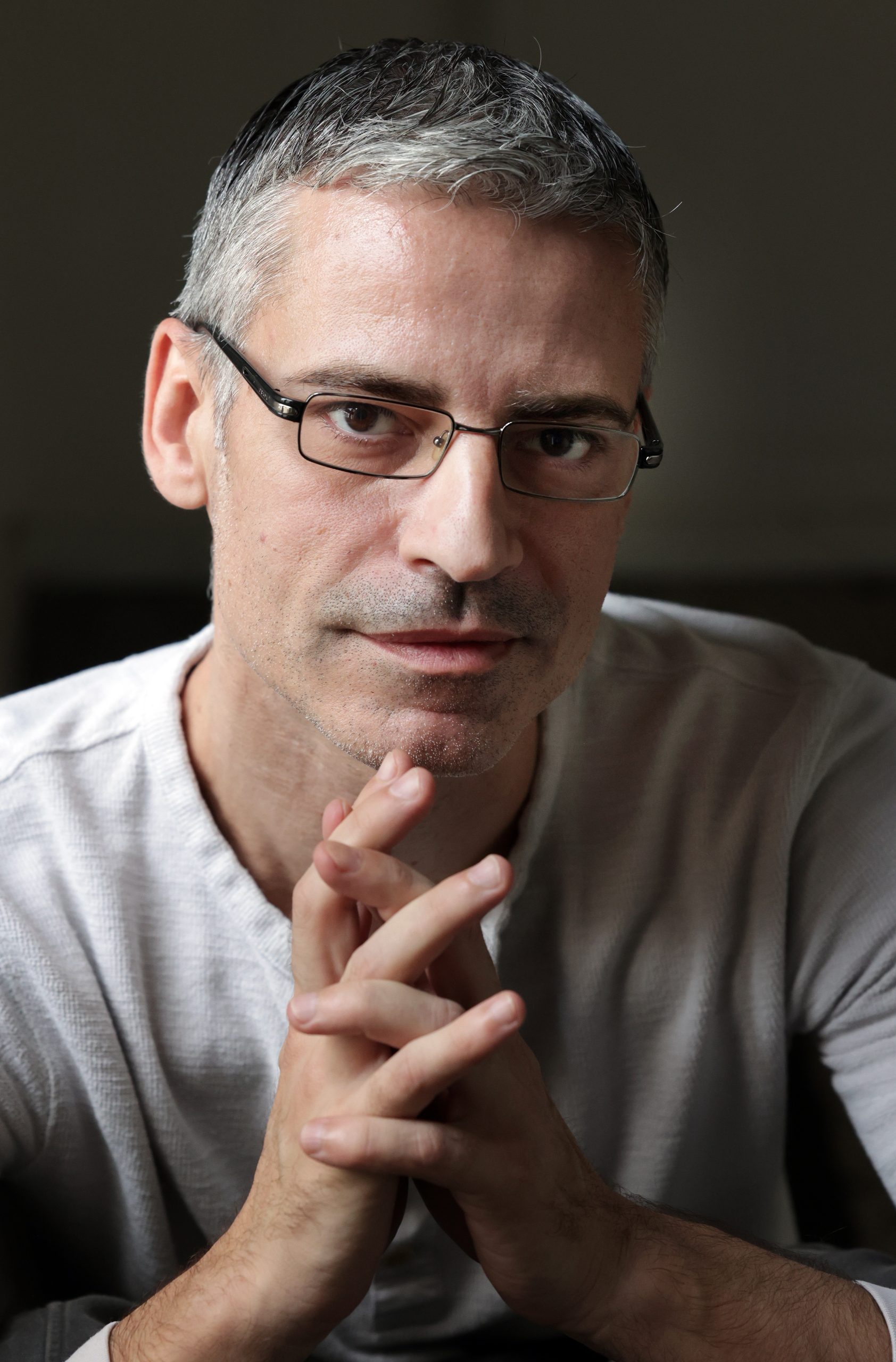20 November 2022
Spanish choreographer Gustavo Ramírez Sansano is telling about the making of the performance Carmen.maquia.
Interview Gustavo Ramirez Sansano
‘We all have something of Carmen in us’
In the coming years, Introdans plans to present a well-known classic each festive season, in a startling contemporary version for all the family. The first of these productions is Carmen, or to be precise Carmen.maquia, a visual and musical spectacle by the Spanish choreographer Gustavo Ramírez Sansano about the ill-fated love between Don José and the flamboyant, unconventional Carmen.
It’s the music of Carmen – the world-famous opera by Georges Bizet – that has always affected him most deeply. But to begin with, Gustavo Ramírez Sansano found little to relate to in the original story, written by Prosper Mérimée in 1835. And he couldn’t relate at all to the character of Carmen herself, or at least not until he created his Carmen.maquia in 2012. “To begin with I felt much more sympathy for Don José. In fact I identified with him. My partner had just left me, my heart was broken, I felt that he, just like Carmen, was behaving in a very uncaring way and giving absolutely no thought to the consequences of his actions.”
At that time Ramírez Sansano was artistic director of the Luna Negra Dance Theater in Chicago; when the group, which focussed on Latino culture, decided to dedicate a season to female choreographers and icons, he felt Carmen shouldn’t be missing from the list. The press acclaimed his Carmen.maquia as a masterpiece and instant classic, after which other companies also included the ballet in their repertoire. And with each new production of the work, Ramírez Sansano’s understanding and sympathy for Carmen grew as well. “Now I understand that her behaviour was driven by a huge desire for freedom, that she behaved in a way that – in her age – was seen as quite acceptable for men but as unacceptable for women. In fact we all have something of Carmen in us, we all have our bad, egocentric aspects. Just in the same way that almost everyone can recognise themselves in the insane jealousy of Don José.”
Impressive black and white
Ramírez Sansano immediately knew that he wanted the dance in his production to speak for itself, and so he wouldn’t use the singing contained in Bizet’s opera. “I took the Carmen Fantasy as my starting point – a highly virtuoso adaptation of the music by violinist Pablo de Sarasate. Because this piece has an extremely upbeat tempo I supplemented it with a few adagios and other compositions by Bizet, which creates a surprisingly fine whole. This is partly because even in the most painful moments, beauty is still paramount for Bizet.”
One thing that Ramírez Sansano certainly didn’t want was a Carmen full of Spanish clichés. “The colour red, costumes with dots and castanets were not an option for me. I wanted to make a statement, especially for the American public for whom I originally made my ballet: Spain is more than paella and bullfighting.”
Instinctively he and his designers Luis Crespo and David Delfín did without colour: they decided on a Carmen in impressive black and white. “We wanted to frame the story differently and so we brought it to life again on a blank canvas. And this soon led to the connection with Picasso, who made many black-and-white drawings of Carmen. We also borrowed the title Carmen.maquia from him. Picasso once said that Carmen was like a bull that no-one could tame or control. And even though I’m absolutely against bullfighting as an entertainment, I really liked this reference to tauromaquia – the art of bullfighting. The art of Carmen, so to speak.”
Tailored to Introdans
Following performances throughout American and also in Spain and Switzerland, Ramirez Sansano’s Carmen is now being produced in the Netherlands for the first time. It feels like coming home for this Spanish choreographer, who danced at Nederlands Dans Theater 2 from 1998 to 2001 and later also choreographed several works for this company. He is now making a totally new version of Carmen.maquia, with the costumes designed by Bregje van Balen, another former NDT dancer. Ramírez Sansano: “A creation is never finished, so I view it as a real gift that I’m able to work on this production again. The spirit is retained but I’m also changing some things, adding things and also using the qualities of the individual dancers. Of course, I first saw them during a dance lesson, but when I asked them to dance elements of my choreography, the magic appeared immediately. Moreover I haven’t chosen dancers who will give typical interpretations of Carmen, Don José and other characters such as Escamillo and Micaela, but instead dancers who are able to create different layers in their role. Above all I want to emphasise the human side, so that you can identify with each of them.”
A visual ‘trip’
Ramírez Sansano intentionally leaves a lot to the imagination, and young audiences are particularly receptive to this. “One time in American we danced Carmen.maquia for children from deprived city districts, with no stage set or lighting but with a narrator. When this narrator said: “Here’s a door” or “Here’s a mountain”, you could sense so clearly that the children were seeing that door and that mountain in front of them.”
So this production is intended for all ages and, as he says, you don’t have to be a huge dance fan to enjoy it. “Just the stage sets and the costumes by themselves make it a visual ‘trip’. And I think that when many spectators see the piece they’ll realise just how much the music of Carmen forms part of our collective memory.”
And then of course there’s the eternally modern, universal theme: love. “For me, Carmen is essentially about the freedom to love and also the freedom to be yourself within the love, without hurting others in the process. I think that if Don José hadn’t murdered Carmen, she too would ultimately have learned this lesson.”
Author: Astrid van Leeuwen
Repetitie met Gustavo Ramirez Sansano
Nog meer over Carmen
De vier belangrijkste personages in Carmen.maquia zijn Don José, Micaela, Escamillo en natuurlijk Carmen. Dansers Brooke Newman, Federico Tosello, Vérine Bouwman en Alberto Tardanico vertellen over hun rol in het stuk. Lees hier meer.
